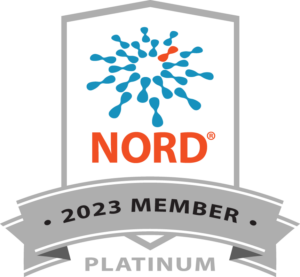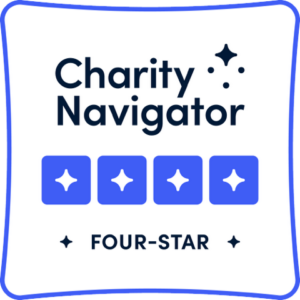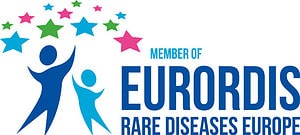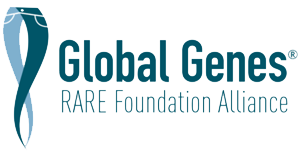General Info for NARP: Neuropathy Ataxia Retinitis Pigmentosa Syndrome
Overview
Neuropathy ataxia retinitis pigmentosa syndrome, also known as NARP, is a rare mitochondrial condition where the mitochondria are not able to produce ATP molecules properly. ATP molecules are the cell’s main energy source. Mitochondria are parts of a cell that help turn the energy we get from food into energy that the body can use. They are also important in the communication between body parts and in creating other materials the body needs. Mitochondrial conditions can cause a variety of signs and symptoms in many parts of the body, particularly those that use a lot of energy like muscles and the brain.
Alternative Names
- NARP
- NARP syndrome
Genetics
Affected Genes
MT-ATP6
Cause and Genetics
NARP is an inherited genetic condition, meaning it is passed down in a family. NARP is caused by changes in the mitochondrial genome (mtDNA) or set of DNA contained in the mitochondria of a cell. NARP is typically caused by changes, called mutations or variants, in the gene MT-ATP6. Mitochondria are inherited from the mother through her eggs. People typically do not inherit any mitochondria from sperm, making it very unlikely for mitochondrial conditions to be passed down from a father.
Frequency
Frequency (Global)
1:40,000
Frequency - More Information
The exact frequency of NARP is not known. It is thought to be less common than a similar condition called Leigh syndrome, which is thought to affect approximately 1 in 40,000 people.
Affected Biological Gender
Both Male and Female
Signs and Symptoms of NARP: Neuropathy Ataxia Retinitis Pigmentosa Syndrome
NARP can cause a range of signs and symptoms typically beginning in childhood or early adulthood. These symptoms can vary widely between people who have the condition, even among members of the same family. Always check with your provider if new symptoms appear or you are concerned. Signs and symptoms may include:
- Numbness, tingling, or pain in the arms and legs (sensory neuropathy)
- Muscle weakness and problems with balance and coordination (ataxia)
- Changes in the light-sensitive tissue that lines the back of the eye (the retina). In some cases, these changes cause vision loss. (retinitis pigmentosa).
- Learning differences and developmental delays
- Loss of intellectual function (dementia)Seizures (epilepsy)
- Hearing loss
- Changes in the electrical signals of the heart (cardiac conduction defects)
People with NARP can be stable for years but have episodes of increased symptoms, often happening when someone is sick with a virus.
Diagnosis
NARP can be diagnosed by:
- Measuring biochemical markers in blood and cerebrospinal fluid (the fluid surrounding the brain and spinal cord)
- Brain studies and imaging looking for changes in the structure of the brain or seizure activity (MRI, MRS, EEG)
- Heart studies looking for rhythm changes (EKG)
- Nerve studies (nerve conduction velocity study/NCV) to look for nerve function
- Performing a genetic test to look for changes in genes known to cause NARP
Newborn Screening: Recommended Uniform Screening Panel (RUSP)
No
Newborn Screening - More Information
Treatment of NARP: Neuropathy Ataxia Retinitis Pigmentosa Syndrome
Treatment and Management
As of 2022, there is no FDA-approved therapy for NARP. Treatment and management of NARP are symptomatic and supportive. This may include:
- Traditional medications for seizures called antiepileptic drugs
- Physical therapy and aerobic exercise to support muscle function
- Traditional treatment of heart conditions
- Hearing aids or cochlear implants for hearing loss
- Avoidance of mitochondrial toxins like certain drugs, tobacco, and alcohol
- Mitochondrial supplements
Type of Specialists and Clinicians
- Audiology
- Cardiology
- Neurology
- Ophthalmology
- Test
Resources
- Neuropathy Ataxia Retinitis Pigmentosa Syndrome – The National Institutes of Health
- Maternally Inherited Leigh Syndrome and NARP Syndrome – National Organization for Rare Disorders
Connecting with others impacted by a rare disease allows for vital information to be shared about day-to-day life, prevents isolation, and gives hope. Please contact MitoAction for peer support opportunities at 888-MITO-411 or email mito411@mitoaction.org.
Other resources we recommend are:
Download the NARP: Neuropathy Ataxia Retinitis Pigmentosa Syndrome Fact Sheet (PDF)
MitoAction does not provide medical advice, diagnosis, treatment, or legal advice. It is essential that all those living with or caring for someone with a Mitochondrial or FAOD disease have an emergency protocol letter. These letters, which are written and signed by a doctor, share details about prescribed treatment during crises and in emergency room settings. Always check with your doctor if you or your child has concerns as everyone may present with symptoms differently. Before beginning any treatment or therapy, please consult with your physician.
Last Updated: 11/15/2022











